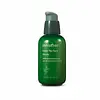What's inside
What's inside
 Key Ingredients
Key Ingredients

 Benefits
Benefits

 Concerns
Concerns

 Ingredients Side-by-side
Ingredients Side-by-side

Water
Skin ConditioningPropanediol
SolventAlcohol
AntimicrobialGlycerin
HumectantBetaine
Humectant1,2-Hexanediol
Skin ConditioningSaccharide Isomerate
HumectantCamellia Sinensis Seed Oil
HumectantCetearyl Olivate
Hydrogenated Lecithin
EmulsifyingSorbitan Olivate
EmulsifyingAcrylates/C10-30 Alkyl Acrylate Crosspolymer
Emulsion StabilisingParfum
MaskingPanthenol
Skin ConditioningHydroxyethyl Acrylate/Sodium Acryloyldimethyl Taurate Copolymer
Emulsion StabilisingTromethamine
BufferingCeratonia Siliqua Gum
EmollientEthylhexylglycerin
Skin ConditioningDisodium EDTA
Camellia Sinensis Leaf Extract
AntimicrobialDextrin
AbsorbentTheobroma Cacao Extract
Skin ConditioningSorbitan Isostearate
EmulsifyingSodium Citrate
BufferingCitric Acid
BufferingSucrose
HumectantWater, Propanediol, Alcohol, Glycerin, Betaine, 1,2-Hexanediol, Saccharide Isomerate, Camellia Sinensis Seed Oil, Cetearyl Olivate, Hydrogenated Lecithin, Sorbitan Olivate, Acrylates/C10-30 Alkyl Acrylate Crosspolymer, Parfum, Panthenol, Hydroxyethyl Acrylate/Sodium Acryloyldimethyl Taurate Copolymer, Tromethamine, Ceratonia Siliqua Gum, Ethylhexylglycerin, Disodium EDTA, Camellia Sinensis Leaf Extract, Dextrin, Theobroma Cacao Extract, Sorbitan Isostearate, Sodium Citrate, Citric Acid, Sucrose
Water
Skin ConditioningPropanediol
SolventGlycerin
HumectantXanthan Gum
EmulsifyingTriheptanoin
Skin ConditioningPhenoxyethanol
PreservativeDimethicone
EmollientSodium Acrylates Copolymer
Glycine Soja Germ Extract
EmollientHydrogenated Polydecene
EmollientMagnesium Ascorbyl Phosphate
AntioxidantGlycine
BufferingSorbitol
HumectantLecithin
EmollientEthylhexylglycerin
Skin ConditioningLavandula Angustifolia Flower Oil
MaskingProline
Skin ConditioningPhospholipids
Skin ConditioningPolyglyceryl-10 Stearate
Skin ConditioningHelianthus Annuus Seed Oil
EmollientHydroxyproline
Skin ConditioningAlanine
MaskingGlutamic Acid
HumectantDecarboxy Carnosine Hcl
Skin ConditioningButylene Glycol
HumectantArginine
MaskingGlyceryl Acrylate/Acrylic Acid Copolymer
HumectantCaprylyl Glycol
EmollientAdenosine
Skin ConditioningDisodium EDTA
Methylsilanol Hydroxyproline Aspartate
Skin ConditioningGlyceryl Caprylate
EmollientPentylene Glycol
Skin ConditioningSalicylic Acid
MaskingBenzyl Alcohol
PerfumingTocopherol
AntioxidantPotassium Sorbate
PreservativeAcetyl Hexapeptide-20
Skin ConditioningLinalool
PerfumingLimonene
PerfumingGeraniol
PerfumingWater, Propanediol, Glycerin, Xanthan Gum, Triheptanoin, Phenoxyethanol, Dimethicone, Sodium Acrylates Copolymer, Glycine Soja Germ Extract, Hydrogenated Polydecene, Magnesium Ascorbyl Phosphate, Glycine, Sorbitol, Lecithin, Ethylhexylglycerin, Lavandula Angustifolia Flower Oil, Proline, Phospholipids, Polyglyceryl-10 Stearate, Helianthus Annuus Seed Oil, Hydroxyproline, Alanine, Glutamic Acid, Decarboxy Carnosine Hcl, Butylene Glycol, Arginine, Glyceryl Acrylate/Acrylic Acid Copolymer, Caprylyl Glycol, Adenosine, Disodium EDTA, Methylsilanol Hydroxyproline Aspartate, Glyceryl Caprylate, Pentylene Glycol, Salicylic Acid, Benzyl Alcohol, Tocopherol, Potassium Sorbate, Acetyl Hexapeptide-20, Linalool, Limonene, Geraniol
 Reviews
Reviews

Ingredients Explained
These ingredients are found in both products.
Ingredients higher up in an ingredient list are typically present in a larger amount.
Disodium EDTA plays a role in making products more stable by aiding other preservatives.
It is a chelating agent, meaning it neutralizes metal ions that may be found in a product.
Disodium EDTA is a salt of edetic acid and is found to be safe in cosmetic ingredients.
Learn more about Disodium EDTAEthylhexylglycerin (we can't pronounce this either) is commonly used as a preservative and skin softener. It is derived from glyceryl.
You might see Ethylhexylglycerin often paired with other preservatives such as phenoxyethanol. Ethylhexylglycerin has been found to increase the effectiveness of these other preservatives.
Glycerin is already naturally found in your skin. It helps moisturize and protect your skin.
A study from 2016 found glycerin to be more effective as a humectant than AHAs and hyaluronic acid.
As a humectant, it helps the skin stay hydrated by pulling moisture to your skin. The low molecular weight of glycerin allows it to pull moisture into the deeper layers of your skin.
Hydrated skin improves your skin barrier; Your skin barrier helps protect against irritants and bacteria.
Glycerin has also been found to have antimicrobial and antiviral properties. Due to these properties, glycerin is often used in wound and burn treatments.
In cosmetics, glycerin is usually derived from plants such as soybean or palm. However, it can also be sourced from animals, such as tallow or animal fat.
This ingredient is organic, colorless, odorless, and non-toxic.
Glycerin is the name for this ingredient in American English. British English uses Glycerol/Glycerine.
Learn more about GlycerinPropanediol is an all-star ingredient. It softens, hydrates, and smooths the skin.
It’s often used to:
Propanediol is not likely to cause sensitivity and considered safe to use. It is derived from corn or petroleum with a clear color and no scent.
Learn more about PropanediolWater. It's the most common cosmetic ingredient of all. You'll usually see it at the top of ingredient lists, meaning that it makes up the largest part of the product.
So why is it so popular? Water most often acts as a solvent - this means that it helps dissolve other ingredients into the formulation.
You'll also recognize water as that liquid we all need to stay alive. If you see this, drink a glass of water. Stay hydrated!
Learn more about Water